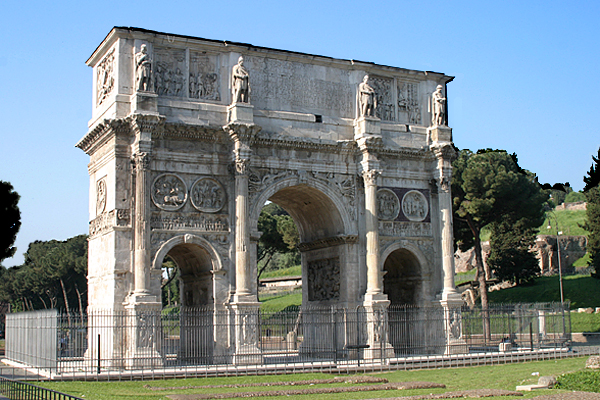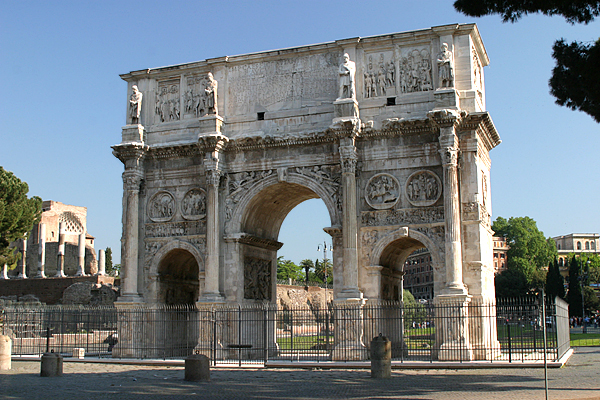


Dedicated by the Senate in AD 315, the tenth anniversary (decennalia) of the emperor's reign, the Arch of Constantine (Arcus Constantini) commemorates the victory of Constantine over Maxentius at the Battle of Milvian Bridge in AD 312 for sole control of the Roman empire in the west. The inscription, which is repeated on both sides of the attic, alludes to the "divine inspiration" about which Eusebius writes in his Life of Constantine (I.28), although which divinity had helped Constantine deliberately is not specified. The arch is the last and largest in Rome, and the most flamboyant in its use of colored stone. On four of the roundels, the head of the principle figure has been resculpted to represent Constantine, which sometimes has a halo (nimbus) around it, signifying the sacred character of the emperor, an iconography that was adopted by Christians to signify divinity. His head also has been substituted on the reliefs of Marcus Aurelius. Recutting the heads and incorporating the sculptural adornments of the great second century emperors into his own arch also served to publicly affirm Constantine as their embodiment and legitimate successor.
Many of the decorative sculptures on the Arch of Constantine have been incorporated from other monuments. The eight medallions or roundels, for instance, set in pairs above the side arches, alternately representing scenes of hunting and sacrifice, are from the time of Hadrian nearly two hundred years earlier. The eight rectangular reliefs in the attic come from an arch erected in AD 176 to celebrate the victories of Marcus Aurelius. Three other panels from the same series are in the Palazzo dei Conservatori. Standing on the cornice above the columns, the eight Dacian captives, which have been partially restored, come from the Forum of Trajan, as do the two large panel reliefs at one end of the arch and in the reveals of the central arch, which originally formed part of a long frieze. It is possible, too, that the original emperor was Domitian, who damnatio memoriae would have made his monuments available for reuse.